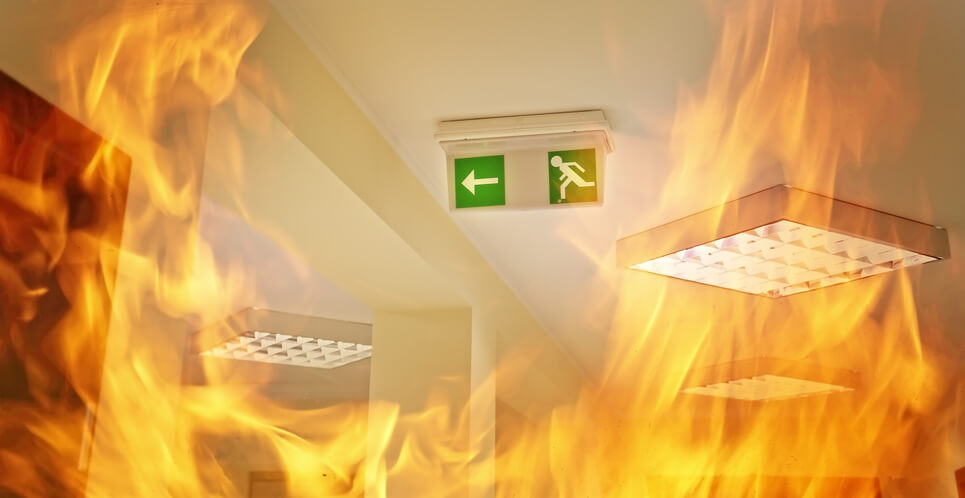The most common claims made for fine art are theft, water and transit damage. Here are ways you can better protect your prized possessions.


Demystifying the Fire Safety Act – and the possible implications for you |
What the new Fire Safety Act requires of you as a “Responsible Person” |
| Since the Grenfell Tower tragedy in 2017, the suitability of existing fire safety legislation has been much debated and publicised. To improve the fire safety of buildings in England and Wales, the Fire Safety Bill was introduced by the Home Office and in April 2021 received Royal Accent, setting it on the path to becoming law.
The purpose of the new Fire Safety Act (FSA), which applies to virtually all premises and covers nearly every type of building structure and open space, is to simplify fire safety legislation and drive fire safety improvements for regulated premises where people live, stay or work. It will also help reduce the number of enforcing authorities that Companies have to deal with. The FSA brings changes to the Regulatory Reform (Fire Safety) Order 2005, placing additional responsibility for compliance on the “Responsible Person” (RP), as an employer, freeholder, management company or managing agent, to minimise the risk to life from fire. This responsibility includes the completion of a relevant fire risk assessment that needs to be completed by a suitably qualified or competent person, the implementation of appropriate fire safety measures and ensuring that the fire risk assessment is kept up to date. The Notable ChangesAn increase in the duties placed on “Responsible Persons” is one of the key elements of the FSA, in that:
What type of property is affected?The changes mostly apply to multi-occupied, residential buildings i.e. any premises that comprise of anything other than a single dwelling. This means that, just as a high-rise building with hundreds of apartments, need a fire risk assessment and adequate fire safety measures, so does a house converted into two flats. Another area of clarification within the FSA is the responsibility of entrance doors to individual flats that open into communal areas; these now fall to the Responsible Person to ensure they are fully compliant and maintained. The fire doors will need to have all the correct intumescent and fire-rated hardware, as well as a risk assessment. Non-domestic premises – these include:
Shared premises:In shared premises it is likely there will be more than one Responsible Person and fire safety plans will need to be co-ordinated to ensure people on or around the premises are safe. For common or shared areas, the Responsible Person is the landlord, freeholder or managing agent. Alterations, extensions and new buildings:When building new premises or doing building work on existing premises, building regulations must be complied with. This includes designing fire safety into the proposed building or extension. The fire safety building regulations provide the full details on this. Who’s responsible and what for?You are the “Responsible Person” for fire safety in business or other non-domestic premises, if you are:
In a workplace, the Responsible Person will be the person who has control of the premises in connection with the carrying on of a trade, business or other undertaking. If there’s more than one Responsible Person, you will need to work together to meet your responsibilities. This also applies if you have paying guests, for example if you run a bed and breakfast, guesthouse or let a self-catering property. As the Responsible Person you must:
or
Penalties and enforcement – and how to avoid themThe Fire Safety Act also now makes enforcement action against Responsible Persons – prosecution for instance – far easier by the fire service and Government. You could be fined or go to prison if you do not follow fire safety regulations. As such, risk assessments are your best defence as they enable you to not only ensure you’re doing everything practically possible to prevent and protect against fire in the first place, but also to prove it. Local fire and rescue authorities inspect premises and can issue fire safety notices telling you about changes you need to make. Where to go for further information and guidance
To ensure you have the right insurance policy in place, get in touch with our qualified advisers on 01952 812380 / 01785 251790. Our team can advise on both residential and commercial landlord insurance as well as your business insurance requirements. |